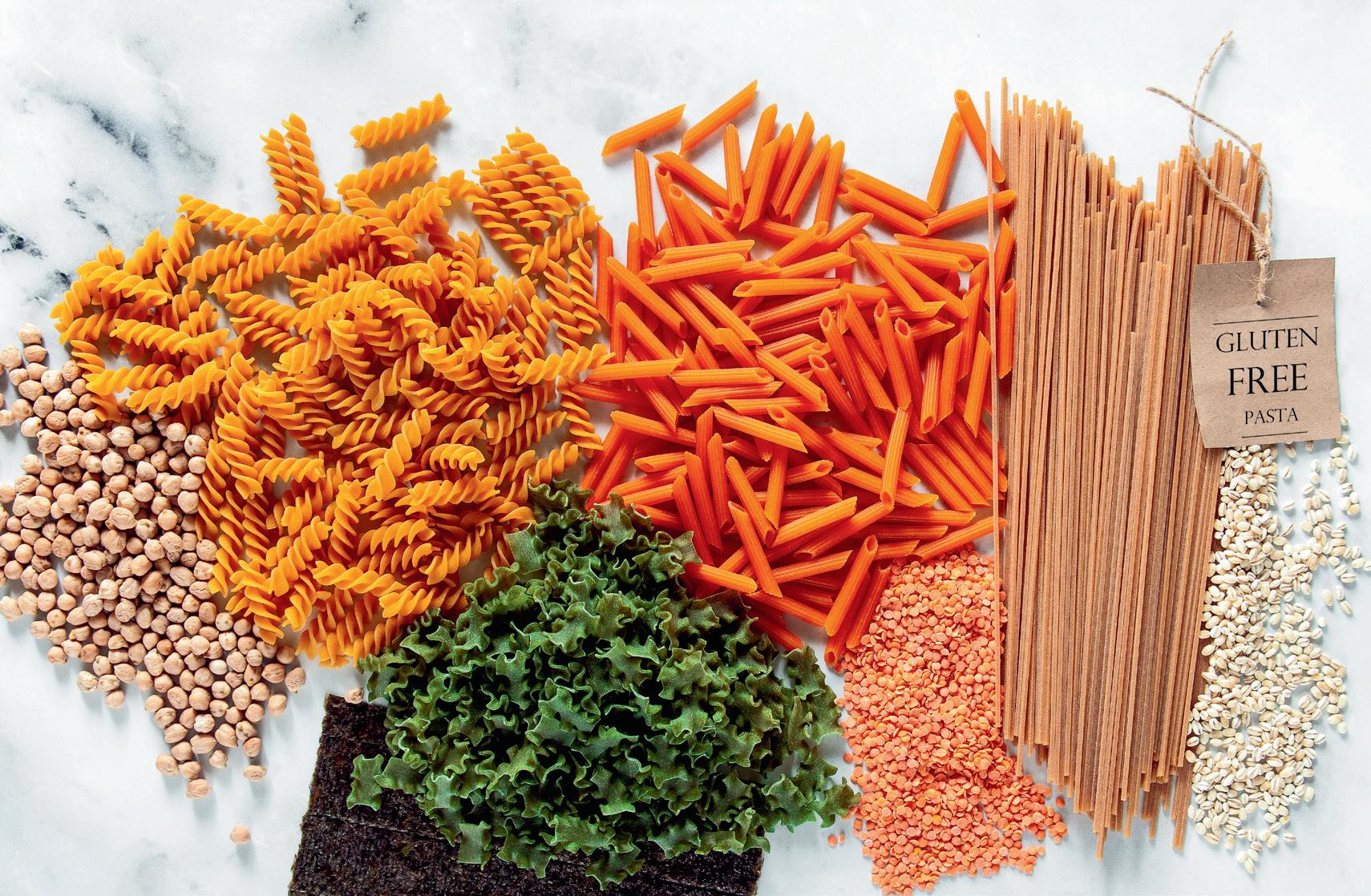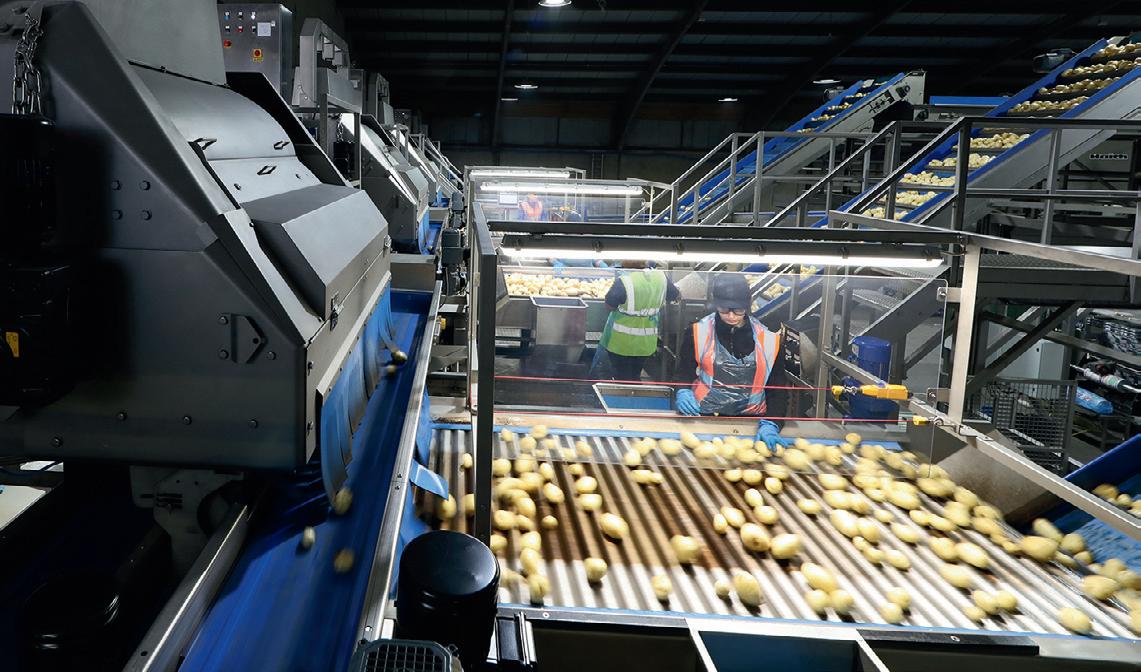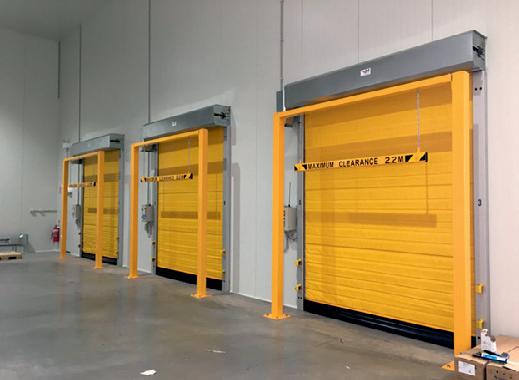
2 minute read
High-protein pasta for the gluten intolerant
A faculty member of Chulalongkorn University’s Faculty of Science in Thailand has researched and developed highprotein, gluten-free pasta noodles for people who are gluten intolerant.
Although there are plenty of gluten-free pastas now available for consumers who are intolerant to gluten, many such products are made from rice flour, which causes the pasta to lose its desired chewiness and some also have lower protein content than wheat pasta.
Many attempts have been made to heighten the quality of rice flour pasta by adding ingredients. To increase the protein, animal-based proteins like egg white and whey proteins or plant-based proteins like soybeans have been added. Different types of hydrocolloids have also been used to improve the texture and cooking quality, but such ingredients may need to be imported or are expensive.
Associate Professor Dr Kanitha Tananuwong, a lecturer at the Department of Food Technology, the Faculty of Science, Chulalongkorn University, head of the research team, has now investigated the use of mung beans to improve the protein levels and texture of gluten-free pasta products.
“Mung beans are an alternative ingredient which has the appropriate qualities. The best part is they can increase protein to pasta and help with the texture and cooking quality, not to mention that they’re easy to find here in Thailand,” said Kanitha.
The research team came up with recipes for developing gluten-free pasta using the scientific and statistical methods.
With three main ingredients — rice flour, mung bean flour and concentrated mung bean protein, they developed four basic pasta recipes with 17–24% of protein, which is higher than wheat pasta, which contains only 14% of protein.
“After mixing the pasta dough, we ran it through a pasta extruder to make spaghetti using the extrusion process under high temperatures, pressure and mechanical shear. Then, the cut pasta is dehydrated until the moisture is no more than 12%,” Kanitha said.
The finished pasta must be inspected for significant characteristics, such as an evaluation of cooking quality and of cooked pasta texture under a texture analyser. More importantly, consumers’ acceptance was tested through a tasting of cooked pasta.
Kanitha said for the appearance, taste and texture when mixed with a sauce and overall preference, the gluten-free pasta with 20% protein, which is the best recipe developed, received similar scores to wheat pasta, but with higher protein content.
The research project was funded by Thai Wah (Public Company Limited) and the ingredients used in developing the pasta are domestically grown in Thailand.
“A benefit of collaborating with the private sector is our research has a chance to hit the shelves in the market,” Kanitha said.
The research team is now working on refining the production of concentrated plant-based proteins for possible used in alternative protein drinks.
Optical sorter for whole potatoes
Key Technology has released its Herbert OCULUS optical sorter for whole potatoes. Suitable for fresh market potatoes or whole potatoes prior to processing, the enhanced system is designed to find and remove potatoes with defects. Its sorting capabilities help ensure product quality while reducing labour requirements and achieving consistent line capacity despite fluctuations in incoming raw product quality.
Features include new cameras that have twice the resolution of the previous generation to identify smaller, harder-to-detect defects. A more advanced 64-bit operating system replaces the previous 32-bit system to achieve a better analysis of each tuber. Longer-lasting air cylinders with better seals run at a lower pressure to minimise energy usage, reduce maintenance and lessen operating noise while maintaining high performance. Lighter reject fingers move faster to improve reject accuracy.
The sorter conveys the potatoes over a series of rollers to present a complete 360-degree view of each tuber to the digital infrared colour cameras. Compared to traditional cascade sorters, this method of sorting can provide gentler handling and 20% more surface inspection to maximise defect removal.


Available in multiple sizes for a range of capacities up to 40 metric tonnes of product per hour, the sorter recognises size, shape, colour and texture. Its detection capabilities enable it to remove a wide range of colour defects, diseases and surface abnormalities including skin discolouration, green and dark colours, bruising, mechanical damage, blackleg and silver scurf.



Key Technology Australia Pty Ltd www.key.net









